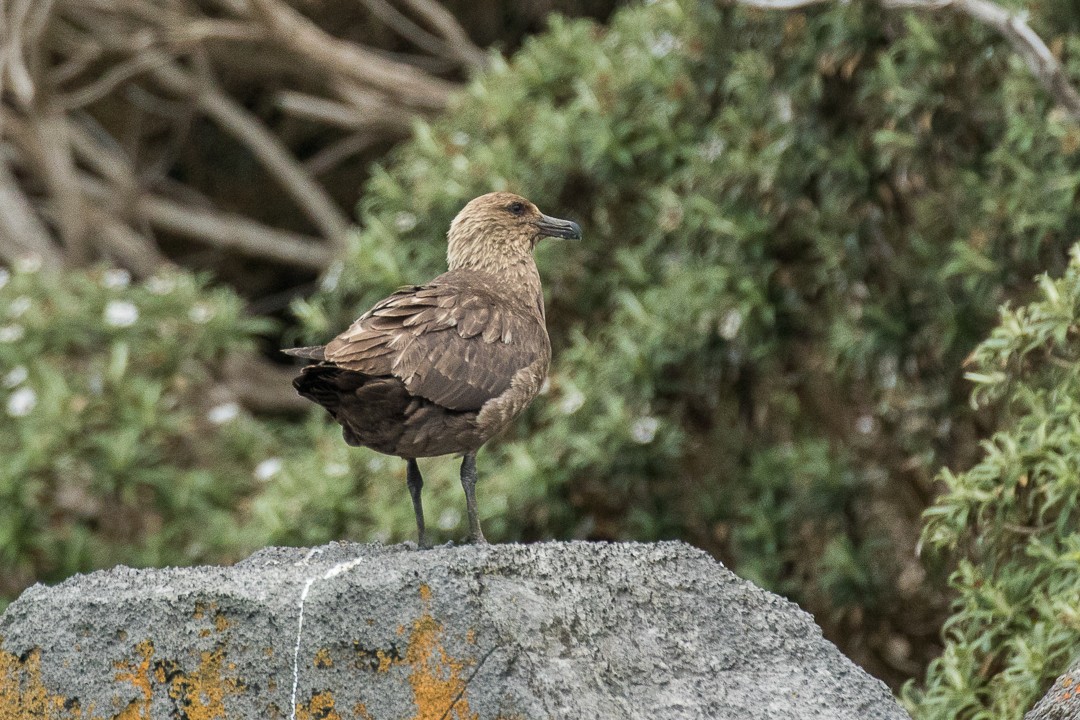Brown Skua
A species of Jaegers, Also known as Subantarctic Skua Scientific name : Stercorarius antarcticus Genus : Jaegers
Brown Skua, A species of Jaegers
Also known as:
Subantarctic Skua
Botanical name: Stercorarius antarcticus
Genus: Jaegers
Content
Description General Info
 Photo By Francesco Veronesi , used under CC-BY-SA-2.0 /Cropped and compressed from original
Photo By Francesco Veronesi , used under CC-BY-SA-2.0 /Cropped and compressed from original Description
This is the heaviest species of skua and rivals the largest gulls, the great black-backed gull and glaucous gull, as the heaviest species in the shorebird order although not as large in length or wingspan. It is 52–64 cm (20–25 in) in length, 126–160 cm (50–63 in) in wingspan and has a body mass of 1.2–2.18 kg (2.6–4.8 lb). S. a. hamiltoni measured on Gough Island, weighed an average of 1.43 kg (3.2 lb) in 9 males and 1.65 kg (3.6 lb) in 9 females. S. a. lonnbergi measured in the Chatham Islands weighed an average of 1.73 kg (3.8 lb) in 30 males and an average of 1.93 kg (4.3 lb) in 32 females. The latter is one of the highest colony mean body mass for any living species of shorebird. A study in 2016 reported that brown skuas can identify individual human beings, possibly indicating high cognitive abilities. Brown skuas have been noted for sometimes bonding with humans who live for extended periods in Antarctica, such as the Eastern Orthodox clergymen at Trinity Church, and engaging in playful or apparently mischievous behavior with them. 
Size
64 cm
Life Expectancy
28.8-29 years
Nest Placement
Ground
Feeding Habits
Brown Skua predominantly preys on seabirds like prions and petrels, as well as scavenges penguin eggs and carcasses. Its diet includes zooplankton, squid, and fish. Brown Skua employs varied foraging methods and uniquely consumes seal afterbirth and milk.
Habitat
The brown Skua thrives primarily within the marine ecosystems surrounding subantarctic islands, known for rich wildlife including burrow-nesting seabirds and penguins. It selects undisturbed territories—grassy, gravel, or rocky areas—for breeding, possibly extending or shifting its range to separate feeding grounds when necessary, avoiding human presence unless attracted to research stations for food.
Dite type
Scavenger
General Info
Feeding Habits
Bird food type
Scientific Classification
Phylum
Chordates Class
Birds Order
Shorebirds Family
Skuas and jaegers Genus
Jaegers Species
Brown Skua